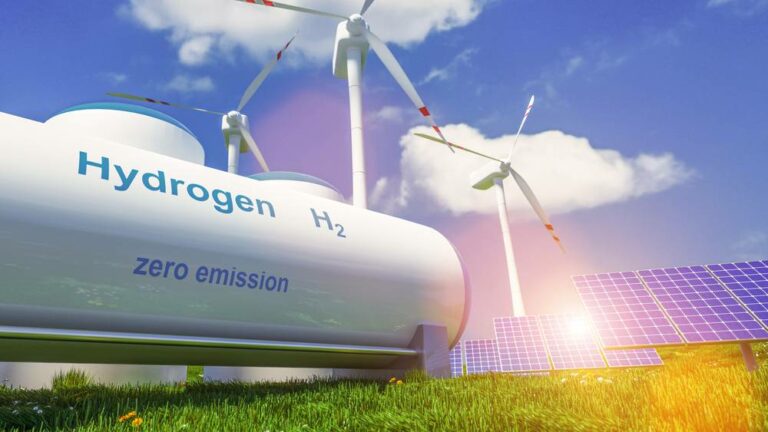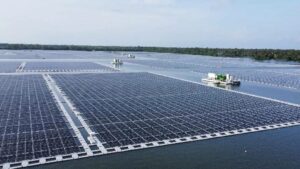Solar Energy is an established technology for generation of renewable pollution free electricity. However, since Solar power is generated only in peak sunny hours and faces problem of storage of generated electricity, the next best step ahead is Green Hydrogen. Green Hydrogen can act as an energy storage solution, converting excess renewable energy into hydrogen during periods of high generation. This stored energy can then be utilized during peak demand, balancing the intermittent nature of renewables and supporting grid stability.
The government of India has approved and launched the National Green Hydrogen Mission 2023, with an outlay of Rs 19,700 crore, which will facilitate transition of the economy to low carbon intensity, reduce dependence on fossil fuel imports, as detailed by Finance Minister while presenting Budget 2023. Mission will consider bilateral agreements with other countries to allow them to use carbon credits linked to the production of green hydrogen using renewable energy in India in exchange for investment and more technology development in this sector. Several companies like NTPC, GAIL, and Indian Oil Corporation have announced several projects in this space and have already started investing in green hydrogen plants to take the first mover advantage.
In Green Hydrogen technology, hydrogen gas is produced through electrolysis, using renewable energy sources like solar or wind power to split water into hydrogen and oxygen. This process ensures a lower carbon footprint and zero greenhouse gas emissions. Green Hydrogen relies on renewable energy sources like solar and wind power, making it an environmentally friendly alternative to fossil fuels. It is considered an energy carrier that can be used in various sectors, from transportation to industrial processes. Electrolysis is the key process in green hydrogen production. It involves passing an electric current through water, separating it into hydrogen and oxygen. This process is powered by renewable energy sources, ensuring the hydrogen produced is truly green. Electrolysers are the devices used in green hydrogen production. They use electricity to split water molecules, producing hydrogen at the cathode and oxygen at the anode. As renewable energy powers electrolyser, the resulting hydrogen is clean and sustainable.
The applications of Green Hydrogen are vast. It can be used as a fuel for fuel cell vehicles, where it combines with oxygen to produce electricity, emitting only water vapor as a byproduct. It is also used in industrial processes, providing a low-carbon alternative. The potential of Green Hydrogen in decarbonization efforts is significant. By replacing fossil fuels in sectors like transportation and industry, it helps reduce greenhouse gas emissions, mitigating climate change and supporting a more sustainable future. To make Green Hydrogen mainstream, infrastructure and distribution networks are crucial. This involves building hydrogen production facilities, establishing supply chains, and developing refueling stations. Investment and supportive policies play a vital role.
It is always more efficient to use renewable power directly than to convert renewable energy to hydrogen for use as an energy source. This is true across sectors. Using renewables to produce hydrogen is about 20 to 40 percent less efficient than using renewable energy directly, when direct use is feasible. But Green Hydrogen is always an added advantage, when power storage is the only option during transportation or during non-peak hours electricity consumption. Hydrogen is a highly volatile and flammable element and extensive safety measures are therefore required to prevent leakage and explosions during generation or storage.
For mass use of Green Hydrogen, India lacks the necessary infrastructure, such as pipelines and storage facilities, to transport and store green hydrogen. This will require significant investment in infrastructure development to support the growth of green hydrogen production. Ongoing research and development are driving improvements in Green Hydrogen production technologies. Advancements in electrolysis efficiency, energy requirements, and materials are paving the way for more cost-effective and scalable solutions. Green Hydrogen holds immense potential as a clean, sustainable energy carrier. Its adoption is essential for achieving a low-carbon future. We have to continue investing in renewable energy, advancing technology, and supporting policies to unlock the power of Green Hydrogen.





















